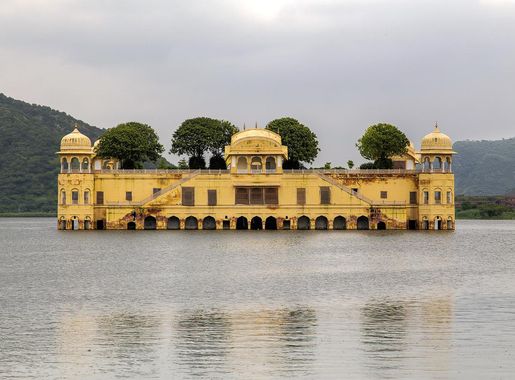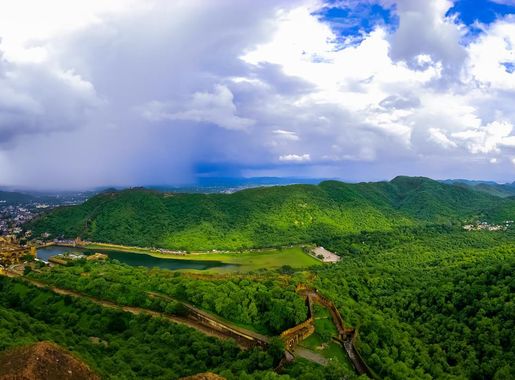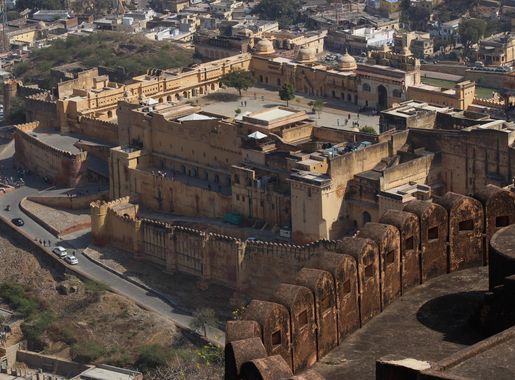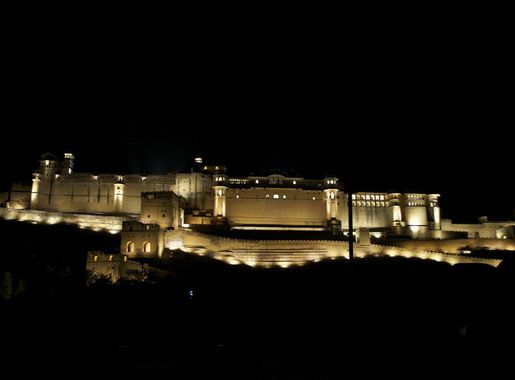
The Enchanting Jal Mahal: Jewel of Jaipur
Discover the enchanting Jal Mahal in Jaipur, a floating palace that epitomizes the blend of Rajput and Mughal architecture, nestled amidst the serene Man Sagar Lake.
Nestled in the heart of Jaipur, Jal Mahal, or the Water Palace, is a mesmerising sight that floats on the serene waters of Man Sagar Lake. This architectural marvel, with its five-story structure, appears to drift on the lake's surface, offering a picturesque view that seems straight out of a fairy tale. Built in the 18th century by Maharaja Madho Singh I, Jal Mahal is a blend of Rajput and Mughal architectural styles, making it a must-visit for history buffs and architecture enthusiasts alike. Surrounded by the Aravalli hills, Jal Mahal provides a tranquil escape from the bustling city life. The area around the palace is teeming with rich flora and fauna, and the lake is a habitat for various migratory birds, making it a paradise for bird watchers. Tourists can enjoy a leisurely boat ride on the lake, which offers a closer view of the palace and an opportunity to appreciate its intricate design and craftsmanship. Even though entry to the palace itself is restricted, the view from the banks and from the boats is nothing short of spectacular. The evenings bring a special charm as the palace is beautifully illuminated, casting a golden reflection on the still waters of the lake. Nearby, the bustling markets of Jaipur offer a chance to indulge in local crafts, textiles, and culinary delights, ensuring a full cultural experience.
Local tips in Jal Mahal
- Visit early in the morning or late in the evening to avoid crowds and enjoy the best light for photography.
- Carry binoculars for bird watching and to get a closer look at the intricate details of the palace.
- Combine your visit with a trip to nearby attractions like Amber Fort and the bustling markets of Jaipur.
The Enchanting Jal Mahal: Jewel of Jaipur
Nestled in the heart of Jaipur, Jal Mahal, or the Water Palace, is a mesmerising sight that floats on the serene waters of Man Sagar Lake. This architectural marvel, with its five-story structure, appears to drift on the lake's surface, offering a picturesque view that seems straight out of a fairy tale. Built in the 18th century by Maharaja Madho Singh I, Jal Mahal is a blend of Rajput and Mughal architectural styles, making it a must-visit for history buffs and architecture enthusiasts alike. Surrounded by the Aravalli hills, Jal Mahal provides a tranquil escape from the bustling city life. The area around the palace is teeming with rich flora and fauna, and the lake is a habitat for various migratory birds, making it a paradise for bird watchers. Tourists can enjoy a leisurely boat ride on the lake, which offers a closer view of the palace and an opportunity to appreciate its intricate design and craftsmanship. Even though entry to the palace itself is restricted, the view from the banks and from the boats is nothing short of spectacular. The evenings bring a special charm as the palace is beautifully illuminated, casting a golden reflection on the still waters of the lake. Nearby, the bustling markets of Jaipur offer a chance to indulge in local crafts, textiles, and culinary delights, ensuring a full cultural experience.
Iconic landmarks you can’t miss
Hawa Mahal
Discover Hawa Mahal, Jaipur's stunning Palace of Winds, where exquisite architecture meets rich cultural heritage in the heart of Rajasthan.
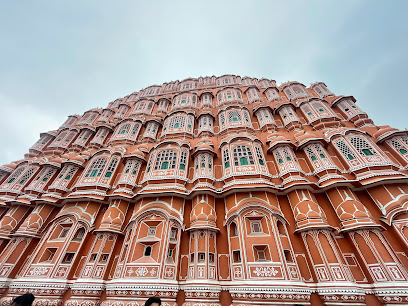
The City Palace
Explore the City Palace of Jaipur, a historical marvel showcasing Rajasthani royalty, intricate architecture, and cultural heritage in the heart of Pink City.

Amar Jawan Jyoti
Discover the serene beauty and historical significance of Amar Jawan Jyoti, a memorial park honoring India's brave soldiers in the heart of Jaipur.
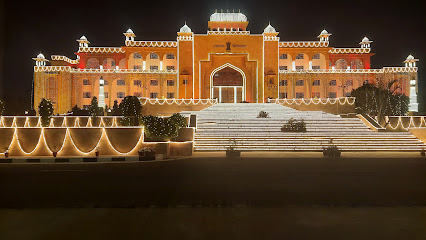
Sheesh Mahal Amber Fort
Explore the opulent Sheesh Mahal at Amber Fort, a stunning historical site adorned with intricate glasswork and breathtaking views in Jaipur, Rajasthan.
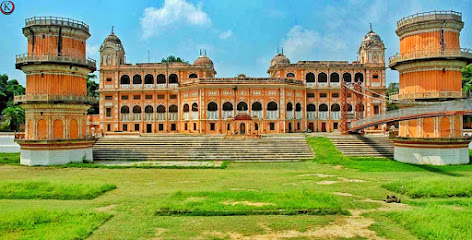
Kanak Vrindavan Mahal
Discover the serene beauty and rich heritage of Kanak Vrindavan Mahal, a historical gem near Jal Mahal, Jaipur, perfect for a tranquil getaway.
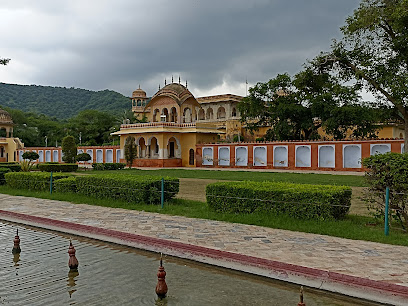
Jal Mahal Paal
Explore the serene beauty of Jal Mahal Paal in Jaipur, a perfect retreat for bird watching and nature appreciation amid stunning landscapes.
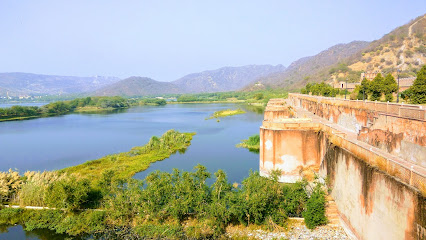
Selfie Point, Jal Mahal
Capture unforgettable moments at the stunning Selfie Point, Jal Mahal: a picturesque blend of history, architecture, and nature in Jaipur.
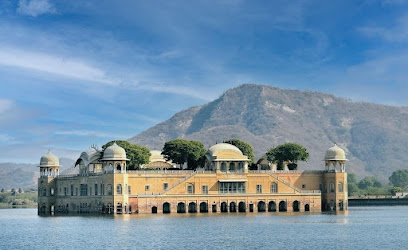
Jal Mahal
Explore the enchanting Jal Mahal, a historic water palace in Jaipur, known for its stunning architecture and serene lakeside views.
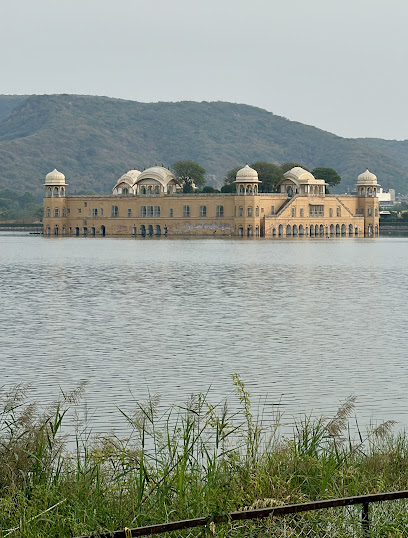
Water Palace
Discover the serene beauty of Jal Mahal, the Water Palace of Jaipur, where history meets tranquility amidst stunning architectural marvels.
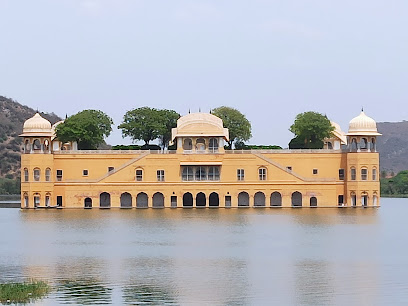
Jal Mahal View Point
Experience the breathtaking views of Jal Mahal at this scenic viewpoint overlooking the serene Man Sagar Lake, a must-visit gem in Jaipur.
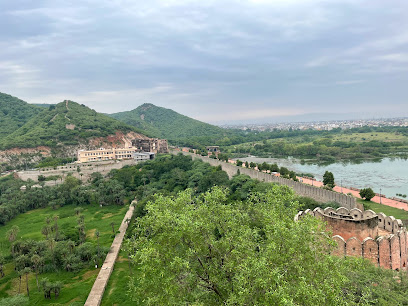
Unmissable attractions to see
Hawa Mahal
Discover the architectural splendor and cultural richness of Hawa Mahal, Jaipur's iconic Palace of Winds, a must-visit destination for every traveler.
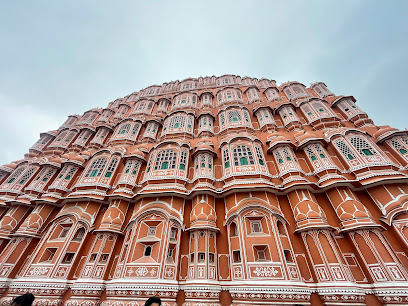
The City Palace
Discover the enchanting City Palace of Jaipur, a historical landmark showcasing the royal heritage and architectural splendor of Rajasthan.

Ramniwas Bagh
Discover the serene beauty of Ramniwas Bagh, a historical garden in Jaipur, perfect for relaxation, nature walks, and cultural exploration.
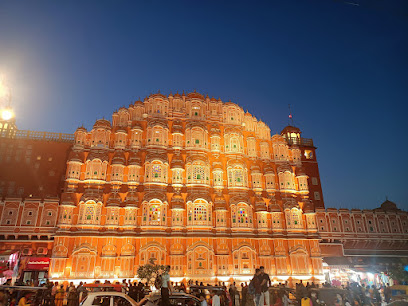
Kanak Vrindavan Mahal
Discover the serene beauty and rich history of Kanak Vrindavan Mahal, a stunning garden palace near Jal Mahal in Jaipur, Rajasthan.
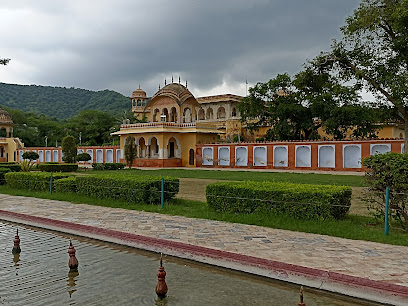
Jaivana Cannon
Discover the grandeur of the Jaivana Cannon at Jaigarh Fort, a historical gem in Jaipur offering breathtaking views and rich Rajputana heritage.
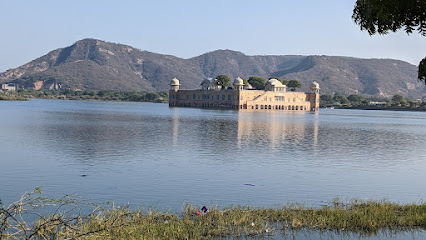
Kanak Vrindavan Park
Explore the serene beauty of Kanak Vrindavan Park in Jaipur, a perfect blend of lush gardens and exquisite architecture, ideal for relaxation and exploration.
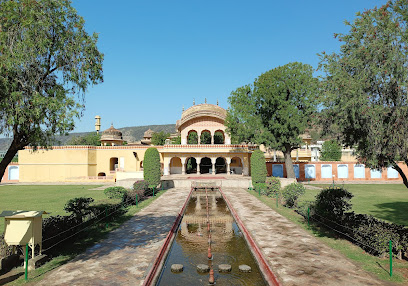
Sagar Lake Amer
Discover the serene beauty of Sagar Lake, a tranquil oasis in Amer, Rajasthan, surrounded by history and breathtaking landscapes.
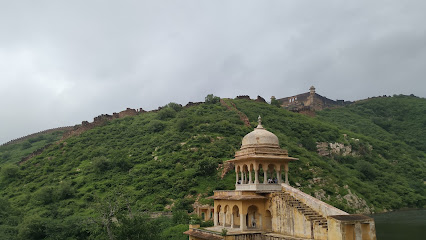
Jal Mahal Paal
Explore the serene Jal Mahal Paal, a bird watching paradise amidst Jaipur's stunning architectural heritage, perfect for nature lovers and photographers.
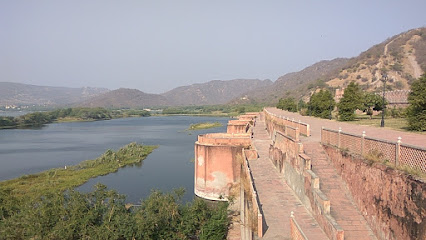
Selfie Point, Jal Mahal
Experience the breathtaking beauty of Jal Mahal at Selfie Point, a must-visit location for stunning photos and serene views in Jaipur.
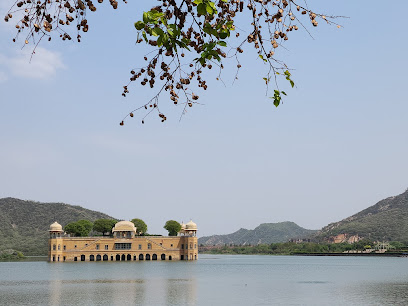
Water Palace
Discover the enchanting Water Palace in Jaipur, a serene historical marvel blending architecture with nature's beauty.
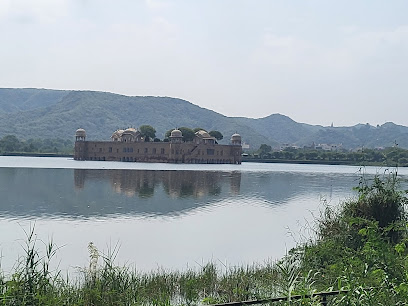
Essential places to dine
Rainbow Restaurant
Experience authentic Indian cuisine at Rainbow Restaurant in Jaipur - where tradition meets taste near Jal Mahal.
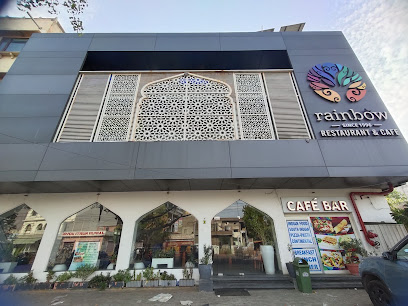
Royal Jaipur Palace
Indulge in authentic Rajasthani cuisine at Royal Jaipur Palace, where regal dining meets exquisite flavors.

Kesar Restaurant
Experience authentic Indian cuisine at Kesar Restaurant in Jaipur – where tradition meets taste in every delightful dish.
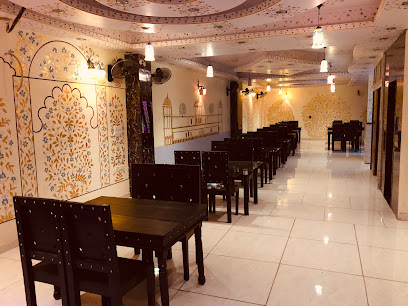
Shree New Suraj Restaurant
Experience authentic Rajasthani and South Indian vegetarian cuisine at Shree New Suraj Restaurant in Jaipur's scenic Jal Mahal area.
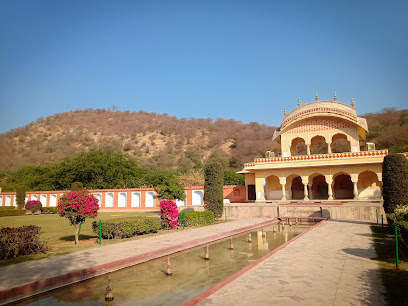
Jaipur cooking
Discover the rich flavors of North Indian cuisine at Jaipur Cooking - where tradition meets taste in every dish.
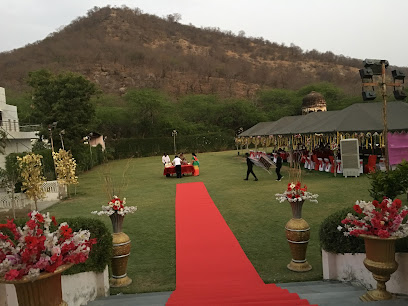
Ramjhara Restaurant
Discover authentic Rajasthani flavors at Ramjhara Restaurant near Jal Mahal in Jaipur - a must-visit for every food lover.
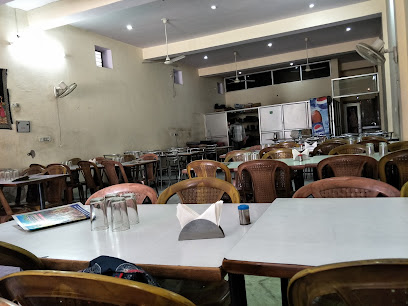
HARI MOHAN VEG REASTURANT
Experience authentic vegetarian cuisine at HARI MOHAN VEG RESTAURANT, nestled near Jal Mahal in Jaipur—where every dish tells a story.
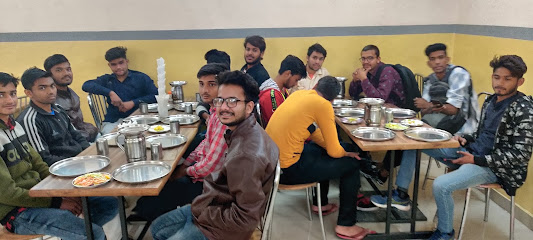
Mansagar
Discover Mansagar: A scenic restaurant in Jaipur offering exquisite dining with views of Jal Mahal amidst Rajasthan's rich culture.
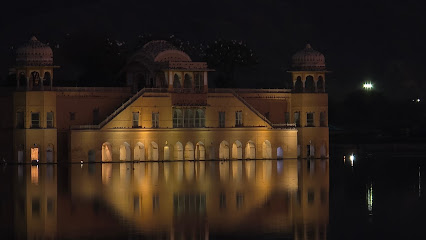
Kanak Darbar
Experience the rich flavors of Rajasthan at Kanak Darbar near Jal Mahal – a culinary delight in Jaipur.
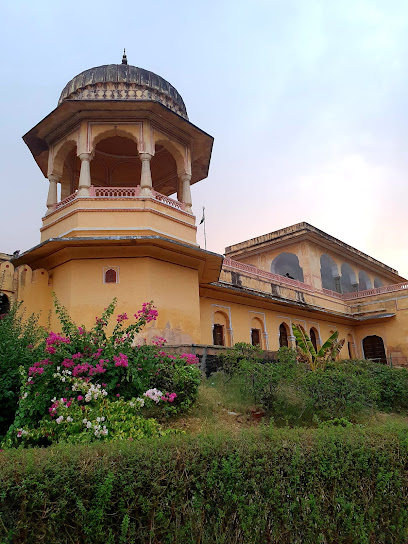
Jal Mahal Restaurant
Experience the rich flavors of Rajasthan at Jal Mahal Restaurant, where traditional Indian cuisine meets modern elegance in Jaipur.
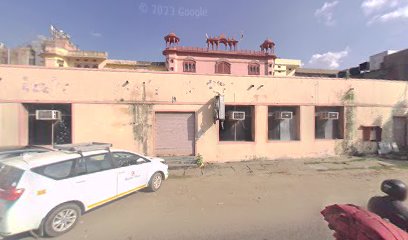
Markets, malls and hidden boutiques
Jaipur Night Market
Explore the vibrant Jaipur Night Market - a colorful shopping haven filled with local crafts, delicious street food, and rich Rajasthani culture.
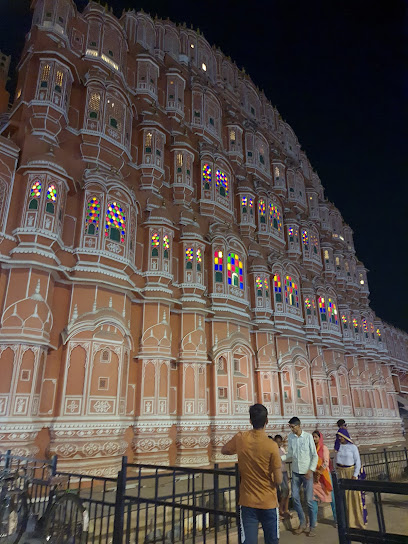
Sanganer Art Bazar
Discover the colorful world of Sanganer Art Bazar in Jaipur, where textiles and traditional crafts come alive in a vibrant shopping experience.
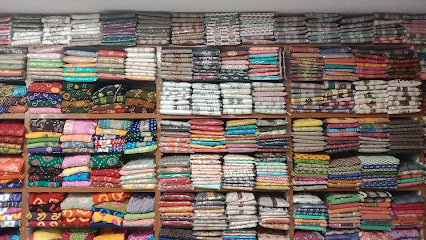
Rajasthani Handloom And Handicraft
Explore the vibrant world of Rajasthani craftsmanship at Rajasthani Handloom and Handicraft in Jaipur, where every piece tells a story.
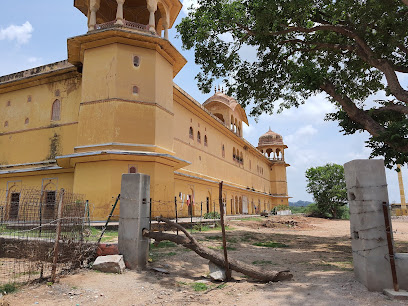
Heritage Mall
Discover Heritage Mall in Jaipur: where traditional charm meets modern shopping, dining, and entertainment for an unforgettable experience.
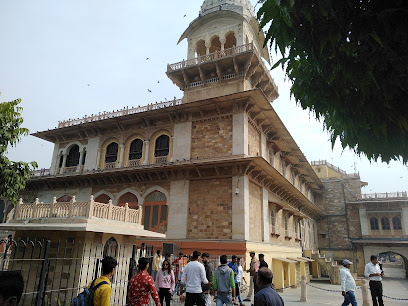
Jewels Lake Palace
Discover the exquisite craftsmanship of Rajasthan at Jewels Lake Palace, a premier jewelry store near Jal Mahal in Jaipur.
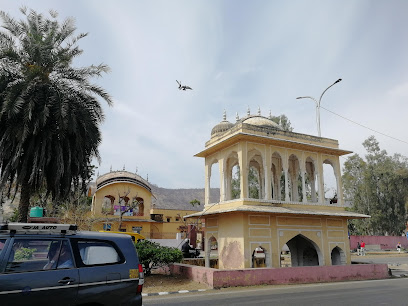
Indian Crafts Bazaar
Discover the essence of Indian craftsmanship at the Indian Crafts Bazaar, a vibrant marketplace in Jaipur showcasing unique handmade treasures.
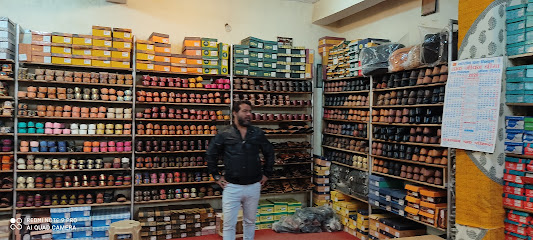
Carpets Palace
Discover exquisite handmade carpets at Carpets Palace in Jaipur, where tradition meets artistry in every weave.
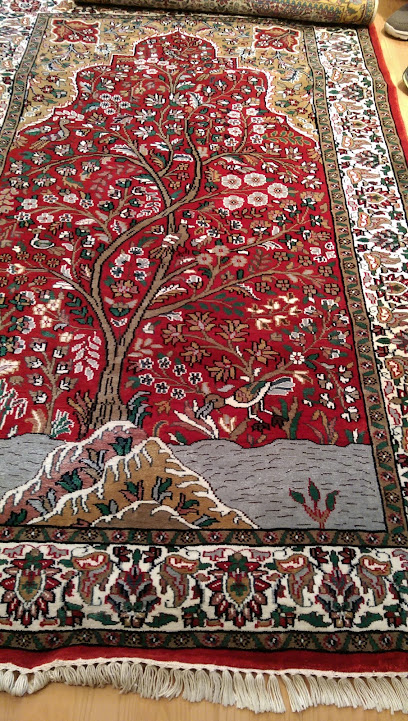
Famous Jaipur Handicrafts Blanket, Saree and Shol
Discover the essence of Jaipur's textile traditions at the Famous Jaipur Handicrafts Blanket, Saree, and Shol store, where craftsmanship meets culture.

I love Handmade Jewels
Explore the exquisite craftsmanship of handmade jewelry at I Love Handmade Jewels, a hidden gem in Jaipur, Rajasthan.
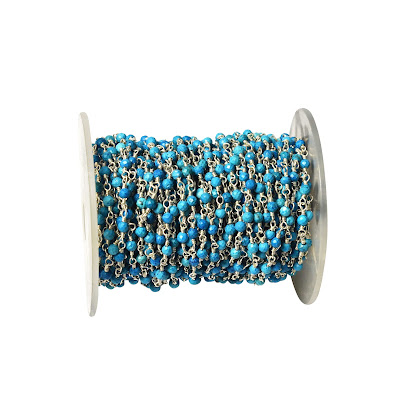
Aahish Garmants
Discover the vibrant fashion scene at Aahish Garments in Jaipur, where tradition meets contemporary style in a stunning shopping experience.
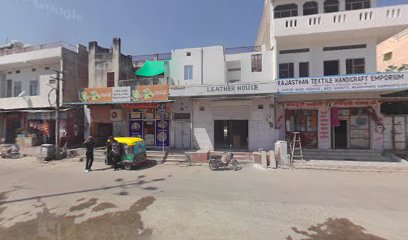
Essential bars & hidden hideouts
Blackout club in Jaipur
Experience the lively atmosphere and exquisite offerings at Blackout Club, Jaipur's premier lounge and bar destination for unforgettable nights.
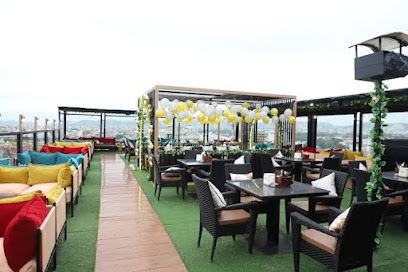
The Night Jar Reloaded
Experience the vibrant culinary scene at The Night Jar Reloaded, Jaipur's premier lounge and restaurant offering exquisite dishes and delightful drinks.

360° - Best cocktail bar & lounge| Panoramic Rooftop
Enjoy breathtaking views and exquisite cocktails at 360° - the ultimate rooftop bar in Jaipur, where vibrant nightlife meets stunning panoramas.
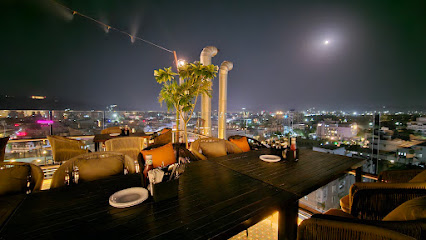
DND Bar and Lounge
Discover the vibrant nightlife at DND Bar and Lounge, where exquisite drinks meet a relaxed atmosphere in the heart of Jaipur.
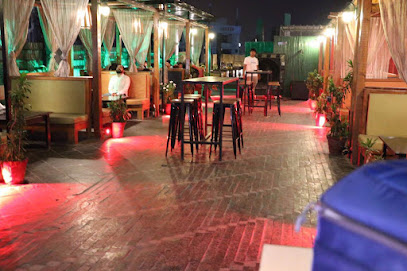
Madhosh Bar
Experience Jaipur's vibrant nightlife at Madhosh Bar, where great food meets refreshing drinks in a lively atmosphere.

Clock Tower Jaipur | Bar & Kitchen
Experience the vibrant ambiance and delightful cuisine at Clock Tower Jaipur, your perfect lounge destination in the heart of Rajasthan.
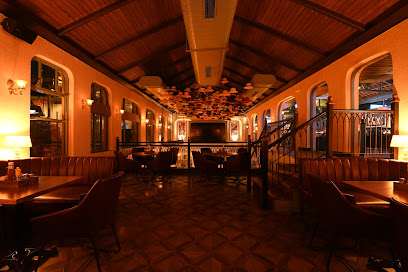
Jaipur Local - Everyday Bar
Discover Jaipur Local - Everyday Bar, a lively pub in Bani Park, combining North Indian cuisine with a vibrant nightlife experience in the heart of Jaipur.
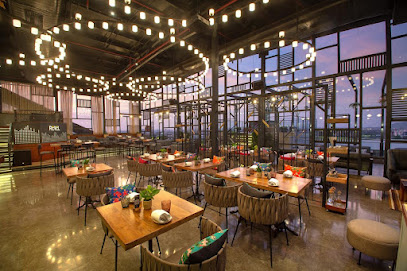
Daglaa The Terrace Rooftop Restaurant
Discover a rooftop culinary paradise in Jaipur at Daglaa The Terrace, where breathtaking views meet exceptional vegetarian cuisine.
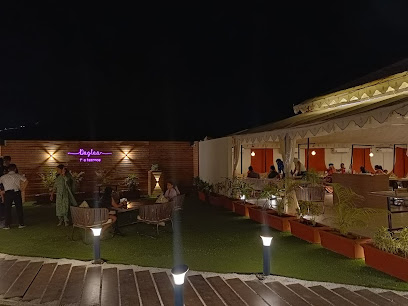
Marigold Bar
Indulge in luxury at Marigold Bar in Jaipur, where innovative cocktails and exquisite ambiance meet in the heart of a majestic palace.
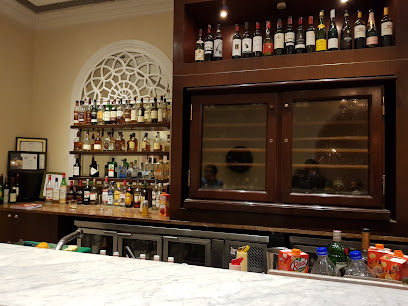
NASHA The Roof Top Bar
Discover NASHA The Roof Top Bar in Jaipur: a perfect blend of scenic views, vibrant atmosphere, and exquisite drinks for an unforgettable experience.
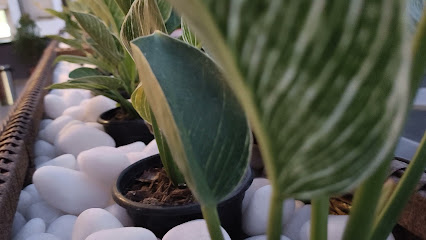
Local Phrases
-
- Helloनमस्ते
[namaste] - Goodbyeअलविदा
[alvida] - Yesहां
[haan] - Noनहीं
[nahin] - Please/You're welcomeकृपया
[krupaya] - Thank youधन्यवाद
[dhanyavad] - Excuse me/Sorryक्षमा करें
[kshama karein] - How are you?आप कैसे हैं?
[aap kaise hain?] - Fine. And you?ठीक हूँ। और आप?
[thik hoon. aur aap?] - Do you speak English?क्या आप अंग्रेजी बोलते हैं?
[kya aap angreji bolte hain?] - I don't understandमुझे समझ में नहीं आया
[mujhe samajh mein nahi aaya]
- Helloनमस्ते
-
- I'd like to see the menu, pleaseकृपया मेन्यू देखना चाहूं
[krupaya menu dekhna chahoon] - I don't eat meatमैं मांस नहीं खाता
[main maans nahi khaata] - Cheers!चियर्स!
[cheers!] - I would like to pay, pleaseकृपया मैं भुगतान करना चाहूं
[krupaya main bhugtan karna chahoon]
- I'd like to see the menu, pleaseकृपया मेन्यू देखना चाहूं
-
- Help!बचाओ!
[bachao!] - Go away!चले जाओ!
[chale jao!] - Call the Police!पुलिस को बुलाओ!
[police ko bulao!] - Call a doctor!डॉक्टर को बुलाओ!
[doctor ko bulao!] - I'm lostमैं खो गया हूँ
[main kho gaya hoon] - I'm illमुझे बीमारी है
[mujhe bimari hai]
- Help!बचाओ!
-
- I'd like to buy...मैं खरीदना चाहूंगा...
[main khareedna chahunga...] - I'm just lookingमैं बस देख रहा हूं
[main bas dekh raha hoon] - How much is it?यह कितने का है?
[yah kitne ka hai?] - That's too expensiveयह बहुत महंगा है
[yah bahut mahnga hai] - Can you lower the price?क्या आप कीमत कम कर सकते हैं?
[kya aap kimat kam kar sakte hain?]
- I'd like to buy...मैं खरीदना चाहूंगा...
-
- What time is it?अब कितने बजे हैं?
[ab kitne baje hain?] - It's one o'clockएक बजे हैं
[ek baje hain] - Half past (10)दस बजे तक
[das baje tak] - Morningसुबह
[subah] - Afternoonदोपहर
[dopahar] - Eveningशाम
[shaam] - Yesterdayकल
[kal] - Todayआज
[aaj] - Tomorrowकल
[kal] - 1एक
[ek] - 2दो
[do] - 3तीन
[teen] - 4चार
[chaar] - 5पांच
[paanch] - 6छह
[chhah] - 7सात
[saat] - 8आठ
[aath] - 9नौ
[nau] - 10दस
[das]
- What time is it?अब कितने बजे हैं?
-
- Where's a/the...?...कहाँ है?
[...kahan hai?] - What's the address?पता क्या है?
[pata kya hai?] - Can you show me (on the map)?क्या आप मुझे दिखा सकते हैं (नक्शे पर)?
[kya aap mujhe dikha sakte hain (naksha par)?] - When's the next (bus)?अगली (बस) कब है?
[agli (bus) kab hai?] - A ticket (to ....)एक टिकट (.... के लिए)
[ek ticket (.... ke liye)]
- Where's a/the...?...कहाँ है?
History of Jal Mahal
-
Jal Mahal, the Water Palace, was built in the 18th century by Maharaja Sawai Jai Singh II, the founder of Jaipur. This architectural masterpiece was designed as a hunting lodge for the Maharaja and a retreat for the royal family during the sweltering summer months. The palace is built in the middle of Man Sagar Lake and showcases a blend of Mughal and Rajput architectural styles, characterized by its elaborate gardens and intricate frescoes.
-
During the rule of the Kachhwaha dynasty, Jal Mahal served as a picturesque getaway for the royal family. The palace was not only a place of relaxation but also a site for royal festivities and events. The lake surrounding the palace was abundant with wildlife, making it a favored location for hunting expeditions, a popular pastime among the Rajput kings.
-
As the political landscape changed in the 19th century, the importance of Jal Mahal diminished. The palace fell into disrepair, particularly during the British Raj, when the focus shifted away from traditional royal leisure activities. The lake was also neglected, leading to environmental changes that further affected the palace's condition.
-
In the late 20th and early 21st centuries, Jal Mahal underwent significant restoration efforts aimed at preserving its historical and architectural integrity. Initiatives to clean and restore Man Sagar Lake have been implemented, improving the ecological balance and enhancing the beauty of the area. Today, Jal Mahal stands as a symbol of Jaipur’s rich heritage, drawing visitors from around the world who come to admire its beauty and historical significance.
-
Jal Mahal is not only a historical landmark but also a cultural icon of Jaipur. It plays a crucial role in the local tourism industry, attracting thousands of tourists each year. The palace is often featured in various cultural events and festivals, showcasing traditional Rajasthani music and dance, thereby enriching the local cultural landscape and promoting Jaipur as a vibrant cultural hub.
Jal Mahal Essentials
-
Jal Mahal is located approximately 4 kilometers from the city center of Jaipur. The most convenient way to reach Jal Mahal is by taxi or auto-rickshaw, which can be easily hailed from anywhere in Jaipur. If you prefer public transport, you can take a local bus from various city points; routes often include stops at popular landmarks. Alternatively, consider renting a bicycle for a more leisurely ride, as the area around Jal Mahal is picturesque.
-
Jal Mahal is best explored on foot, as the surrounding areas offer scenic views and pleasant walking paths. Bicycles can be rented from local vendors for those looking to cover more ground. Auto-rickshaws are available for short distances, while local buses can connect you to other parts of Jaipur if needed. Be mindful of peak traffic hours when planning your travels.
-
Jal Mahal is generally safe for tourists, but standard precautions should be taken. Avoid showing valuables and keep an eye on your belongings, especially in crowded areas. It's advisable to stay clear of poorly lit streets at night. Areas near the bus terminals and some markets may have higher instances of petty crime, so remain vigilant.
-
In case of an emergency, dial 100 for police assistance or 108 for ambulance services. Hospitals and clinics are available in Jaipur, but it’s wise to have travel insurance covering medical emergencies. Familiarize yourself with the nearest medical facilities upon arrival. For minor issues, pharmacies are readily accessible in the area.
-
Fashion: Do dress modestly, especially when visiting religious or cultural sites. Avoid revealing clothing. Religion: Do respect local customs and traditions. Remove shoes when entering temples, and cover your head if required. Public Transport: Do be courteous and offer your seat to elderly passengers. Don’t eat or drink on public transport. Greetings: Do greet locals with a smile and a polite nod. Eating & Drinking: Do try local Rajasthani cuisine and accept food offers graciously. Don’t refuse hospitality, as this is considered impolite.
-
To experience Jal Mahal like a local, visit during early morning or late afternoon when the light is perfect for photography. Take time to enjoy the views of the lake and surrounding hills, and consider a boat ride to appreciate the structure from different angles. Engage with local vendors selling handicrafts and snacks, and don't miss the street food available nearby—try the famed 'pani puri' and 'lassi' for a true taste of Jaipur.
-
When visiting Jal Mahal, it is important to respect the local culture. Always ask for permission before taking photos of people, especially children. If invited into a local’s home, it is customary to remove your shoes and bring a small gift as a token of appreciation. Be mindful of cultural sensitivities, particularly around religious practices and festivals.
Nearby Cities to Jal Mahal
-
Things To Do in Ranthambore
-
Things To Do in Pushkar
-
Things To Do in Agra
-
Things To Do in Delhi
-
Things To Do in Gwalior
-
Things To Do in Jodhpur
-
Things To Do in Udaipur
-
Things To Do in Rishikesh
-
Things To Do in Bhopal
-
Things To Do in Kanpur
-
Things To Do in Shimla
-
Things To Do in Jaisalmer
-
Things To Do in Lucknow
-
Things To Do in Lahore
-
Things To Do in Amritsar

